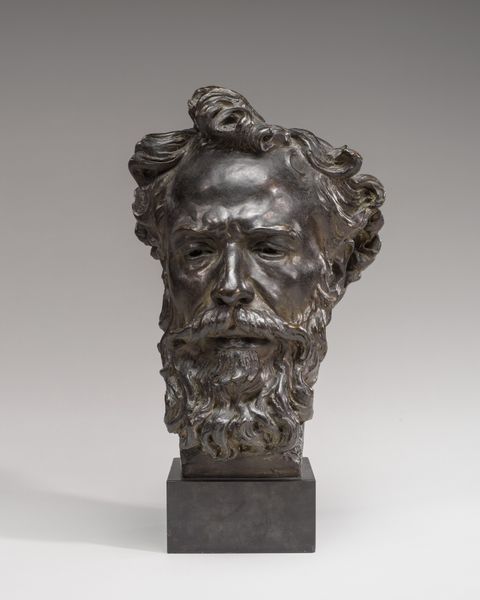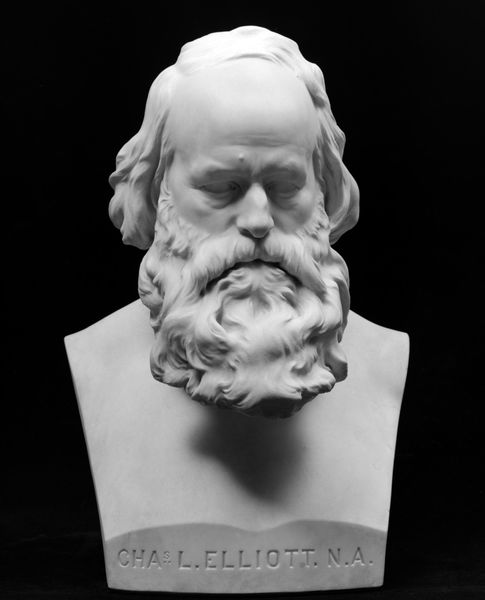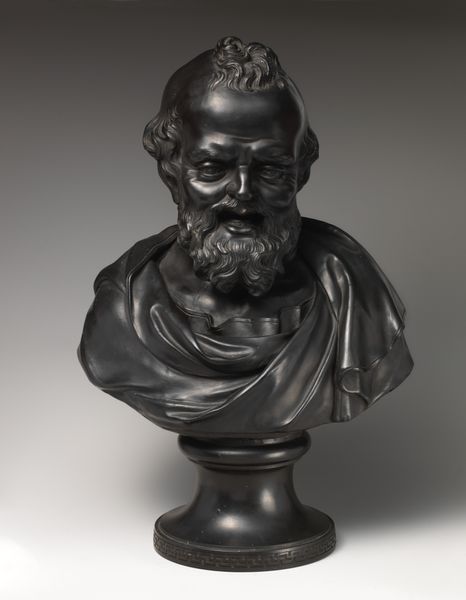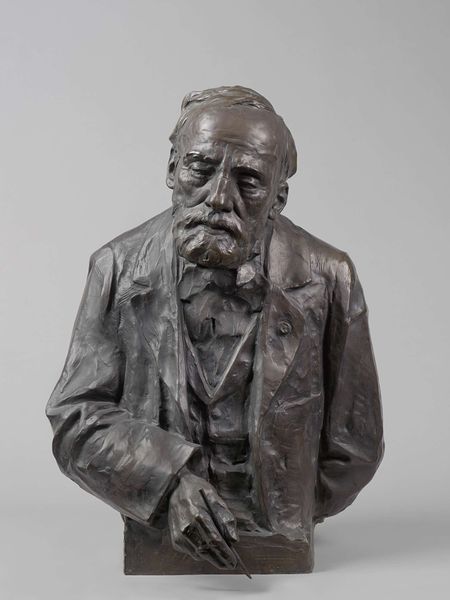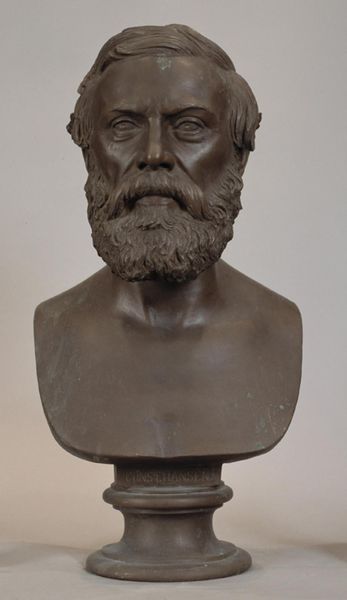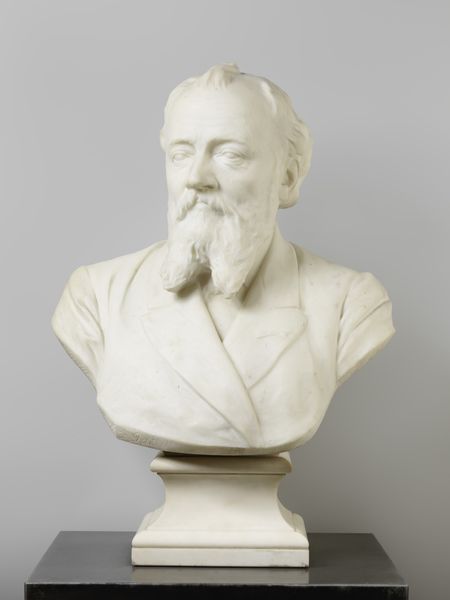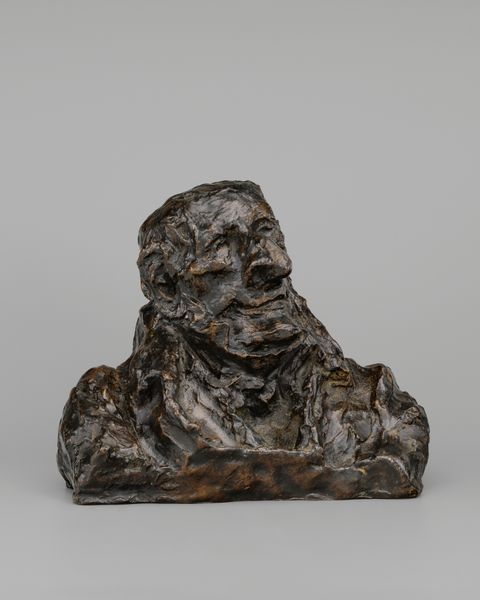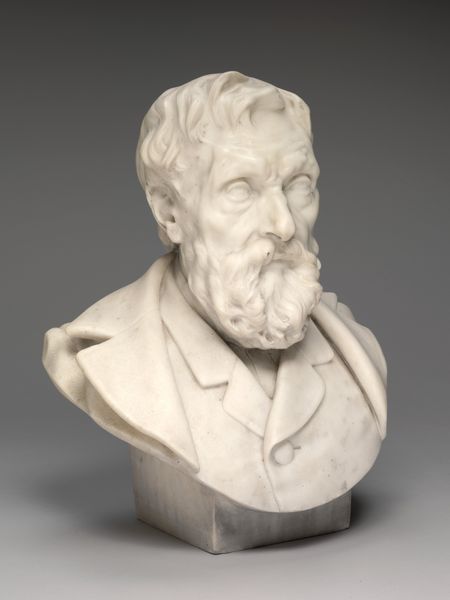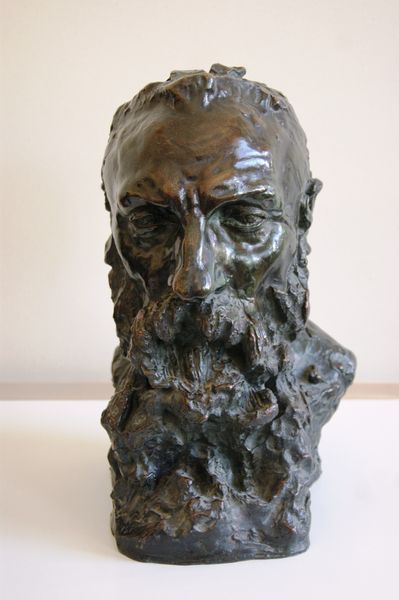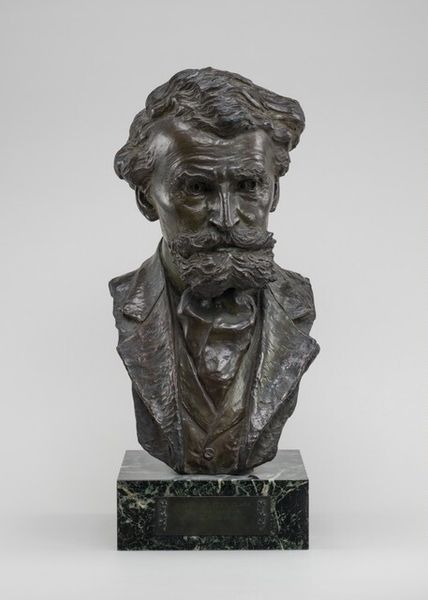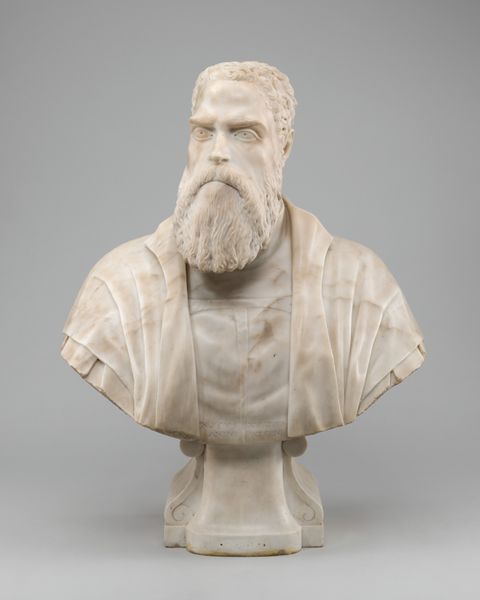
bronze, sculpture
#
portrait
#
sculpture
#
bronze
#
sculpture
#
decorative-art
Dimensions: Overall: 19 13/16 × 16 3/8 × 11 9/16 in. (50.3 × 41.6 × 29.4 cm); Height (socle): 5 5/8 in. (14.3 cm)
Copyright: Public Domain
Editor: Standing before us is Augustin Jean Moreau-Vauthier’s bronze sculpture "George A. Lucas" created in 1890. I'm struck by how substantial the beard appears and the smoothness of the face that seems to push it forward in space. What stands out to you from a formalist perspective? Curator: What immediately arrests me is the interplay of textures. Consider the coarse, almost chaotic arrangement of the beard, contrasting sharply with the relatively smooth planes of the face and forehead. Notice also how the lines of the beard are mirrored and augmented by the folds in the clothing. Editor: So, the texture tells part of the story, it seems? Curator: Precisely. And think about the tonality of the bronze itself. Light glances across the raised surfaces, highlighting the formal structure, while the darker recesses articulate volume and depth. How does this contrast contribute to your interpretation? Editor: I hadn't noticed how the sculptor seemed to use the direction of the gaze as a counterpoint to the depth of field occupied by the beard. The beard brings my eye forward, yet Lucas' eyes seem focused far beyond the sculpture itself. Curator: An excellent observation. The sculptor masterfully employed these techniques. It underscores how the sculpture’s success lies in the cohesive articulation of form and texture. In short, Moreau-Vauthier directs our reading by composing contrasts between line, light, and surface. Editor: That's helpful. I can definitely see those elements more clearly now and it helps me to better understand how those choices add significance to the work. Curator: Yes, by studying its very architecture, we gain access to an artistic logic.
Comments
No comments
Be the first to comment and join the conversation on the ultimate creative platform.
